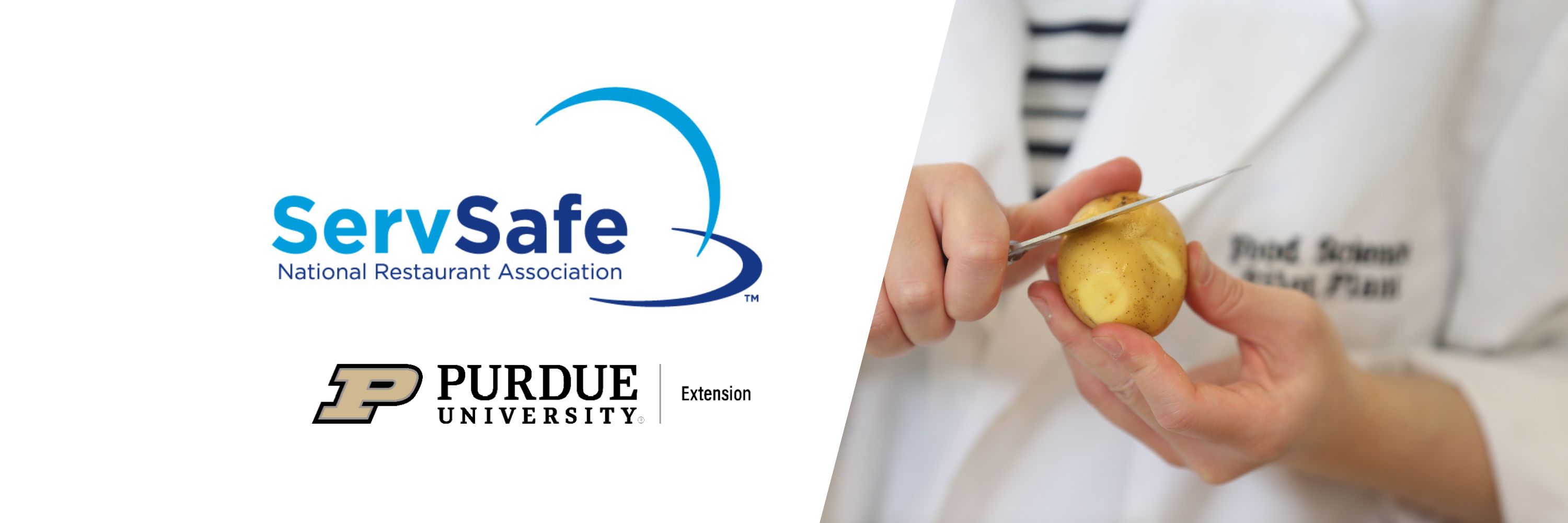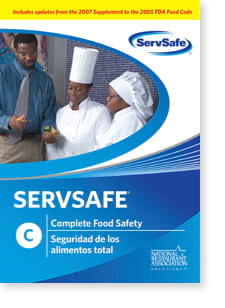Recognizing the Function of a ServSafe Food Handler in Ensuring Food Safety Specifications
Recognizing the Function of a ServSafe Food Handler in Ensuring Food Safety Specifications
Blog Article
Comprehensive Food Handlers Educating for Hygiene and Safety
In today's swiftly progressing food service landscape, comprehensive food handlers training has arised as a critical element for guaranteeing health and safety. By instilling essential techniques associated to hand hygiene, food storage, and hygiene, this training not only alleviates the risk of foodborne health problems but likewise strengthens conformity with regulatory standards.
Importance of Food Security Training

Additionally, food safety and security training helps to make sure that staff members are aware of current guidelines and guidelines, which are vital for maintaining functional licenses and preventing pricey fines. Normal training sessions additionally work as a platform for reinforcing finest practices, therefore lowering the probability of human error, which commonly works as a leading root cause of food contamination.
Furthermore, buying food security training can boost an establishment's credibility, as consumers progressively focus on dining experiences that reflect high security requirements. Such positive measures not only secure customers however also contribute to the lasting success of food organizations. In recap, extensive food safety training is an essential aspect of food service procedures, directly influencing both public wellness and company sustainability.
Trick Principles of Health
Maintaining high standards of health is vital in any kind of food dealing with environment to stop contamination and make certain the security of customers. The vital concepts of health include numerous crucial practices that food handlers have to constantly use.
First, hand health is extremely important; food trainers ought to wash their hands extensively with soap and water prior to and after handling food, in addition to after using the washroom or touching any potentially infected surfaces. Secondly, tools and surface areas have to be regularly cleaned up and sanitized to remove microorganisms. This consists of tools, cutting boards, and countertops, which need to be preserved in a tidy problem.


Appropriate food storage space is also vital; raw foods must be saved separately from cooked or ready-to-eat items to stay clear of cross-contamination. servsafe food handler. Furthermore, maintaining ideal temperature level controls is vital; subject to spoiling items ought to be kept at risk-free temperature levels to prevent bacterial growth
Last but not least, personal health can not be overlooked. Food handlers must wear tidy garments, usage hair restraints, and stay clear of functioning when ill. By sticking to these essential concepts of hygiene, food trainers can significantly decrease the risk of foodborne ailments and promote a much safer eating experience for all consumers.
Usual Foodborne Illnesses
Although lots of foodborne illnesses can be stopped through proper health and risk-free food taking care of practices, they stay a considerable public health and wellness problem. Foodborne pathogens can bring about a range of health problems, varying from light stomach distress to serious complications and also fatality.
Usual foodborne diseases include salmonellosis, brought on by Salmonella microorganisms, usually connected to undercooked poultry and eggs. One more widespread health problem is listeriosis, connected with raw milk items and ready-to-eat meats, which can be specifically hazardous for immunocompromised individuals and pregnant females. Norovirus, frequently acquired from contaminated food or surface areas, is understood for its fast spread and capability to trigger episodes in public settings.
Escherichia coli (E. coli) infection, significantly connected with undercooked ground beef and contaminated fruit and vegetables, can lead to extreme abdominal aches and kidney failing in many cases. Furthermore, Clostridium perfringens, often found in large quantities of food that are incorrectly saved, can trigger gastrointestinal disorder with signs showing up quickly after usage.
Understanding these diseases is his explanation crucial for food handlers, as understanding can considerably lower the risk of contamination and shield public health. Correct education and training are crucial components in combating foodborne diseases.
Ideal Practices for Food Handling
Reliable food handling methods are crucial in preventing the spread of foodborne illnesses. First of all, appropriate hand hygiene is important; food trainers should clean their hands thoroughly with soap and water prior to and after dealing with food, particularly raw meat or fowl - servsafe manager. This basic action dramatically minimizes the risk of cross-contamination
Secondly, maintaining proper food storage space temperatures is critical. Disposable products ought to be stored at or below 40 ° F(4 ° C) to hinder bacterial growth. In addition, cooked foods ought to be kept over 140 ° F(60 ° C) till served.
Third, ensuring tidiness of surfaces and devices is crucial. Regularly disinfect kitchen counters, reducing boards, and utensils, particularly after preparing raw foods. Usage different cutting boards for ready-to-eat and raw foods to further reduce contamination threats.
In addition, when preparing food, it is essential to comply with the principle of "first in, initially out" (FIFO) to handle inventory efficiently and reduce putridity. Constantly read and stick to food item labels for secure cooking temperatures and dealing with instructions. By applying these best techniques, food trainers can substantially improve food safety and security and safeguard public wellness.
Executing a Security Culture
Developing a safety and security culture within a food taking care of setting is necessary for cultivating a dedication to food safety among all employee. This culture highlights the relevance of food safety as a common responsibility, motivating staff members to prioritize health practices constantly.
To implement a safety culture, organizations should begin by providing detailed training that addresses food handling procedures, prospective useful content hazards, and the importance of personal hygiene. Training sessions need to be interactive and customized to the specific roles of personnel members, ensuring relevance and engagement.
In addition, leadership plays an important role in developing this culture. Management must model safe methods and communicate the relevance of food safety frequently. Identifying and compensating employees who copyright safety and security requirements can additionally enhance these actions.
In addition, open interaction channels have to be developed, permitting personnel to report safety and security worries without fear of effect. Normal security audits and responses sessions can aid recognize areas for improvement and reinforce liability.
Eventually, cultivating a safety culture not only improves conformity with food safety and security guidelines however also secures public wellness, promotes worker morale, and adds to the overall success of the food managing establishment.
Verdict
In final thought, thorough food handlers training plays a pivotal duty in promoting health and safety within food solution establishments. By equipping employees with crucial understanding regarding food security concepts, common foodborne ailments, and best practices for managing food, such training substantially decreases health and wellness risks. Furthermore, cultivating a society of safety and security enhances the establishment's reputation and lines up with customer assumptions for high safety and security standards, ultimately adding to public health defense and the total success of the food solution industry.
In today's rapidly advancing food service landscape, thorough food trainers training has actually arised as an important element for making certain health and safety.Food safety and security training is important for preserving high requirements in food handling and prep work, with researches showing that proper training can reduce foodborne illnesses by up to 30%. In summary, extensive food safety and security training is an essential aspect of food service procedures, straight affecting both public health and service sustainability.

Report this page